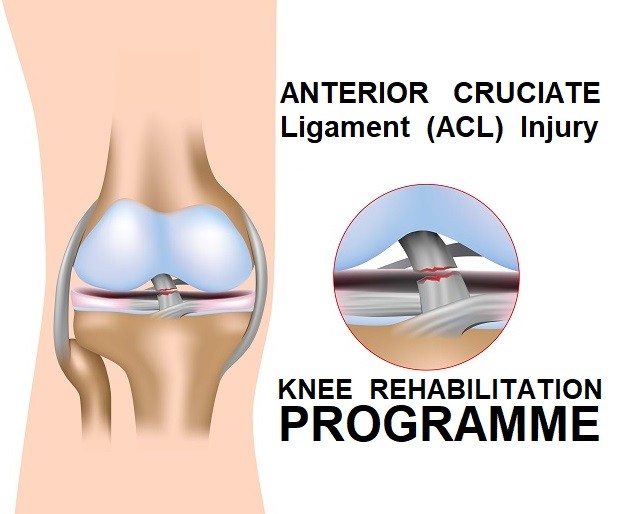If you are an active person knee injuries could be part of the “game”. If you want to recover fast and safe, a sports injury rehabilitation coach is your go-to individual on the road to recovery. A vital component of your recovery is a well-crafted plan using customised ACL rehabilitation exercises.
You can learn more by visiting these 5 star successful cases – here Nikki’s ACL rehab experience, Arron Cadette is at the end of this article and at this link is Ramona’s ACL recovery case.
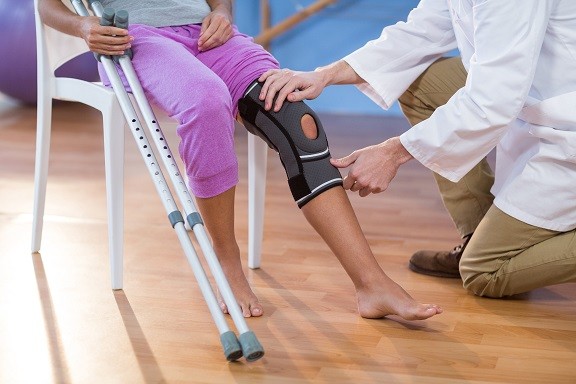
Knee injuries are very dangerous. If they aren’t managed properly the injury could become worse.
Instead of hoping that everything will go smoothly, patients with ACL injury are advised by sports injury qualified doctors to take a proactive role.
The doctors know that when we are working with a knee recovery expert providing us with on to one rehab training and custumised rehabilitation guidelines for ACL we will recover fast and safe.
Throughout this medically referenced article, you are going to learn more about these injuries and the importance of ACL rehabilitation personal trainer in London.
What is ACL injury?
ACL injury is one of the most common and costly ligamentous knee injuries [1] and as the name suggests it affects the anterior cruciate ligament.
The anterior cruciate ligament is in the middle of your knee and it prevents shin bone from sliding out in front of the thigh bone.
It is made up of multiple collagen bundles that slightly elevate the multi-fascicular nature of the ACL [2].
In anatomy, a fascicle is defined as a small bundle or tract of nerve and muscle fiber.
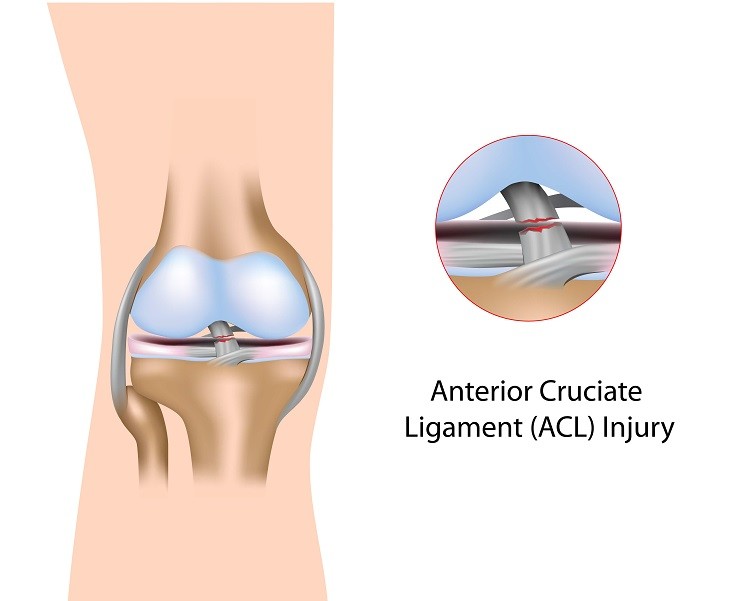
The anterior cruciate ligament contributes to knee stability, which is why customised ACL rehabilitation exercises are the fool proof strategy to improve dormant muscles, knee stability, strength and range of motion etc.
ACL injuries often times result in:
- imbalances and pain
- joint effusion,
- altered movement,
- increased fear of performing a movement
- decreased functional performance,
- muscle weakness
- altered posture and muscle/joints positioning
Athletes who sustain these injuries may be ruled out for the rest of the season [3] and start to train regularly with a sports injury rehabilitation coach.
Although symptoms of ACL injury can be frustrating and difficult to cope with, the recovery is possible, find out how.
Causes of ACL injuries
In most cases, ACL injuries occur in young, active individuals and women are more likely than men to sustain them. Most frequent causes of ACL injuries include [4]:
- High-risk sports: baseball, football, American football, basketball, and skiing
- Femoral notch stenosis
- Acceleration and deceleration motions with excessive quadriceps contraction could lead to noncontact ACL injuries [5]
- Pivoting or landing from a jump e.g. when playing basketball
- Player-to-player contact in football
- Footwear i.e. individuals who wear cleats are more likely to sustain an ACL injury
One study which followed 89 athletes also found that most ACL injuries occurred at foot strike with the knee close to full extension.
Additionally, injured athletes also had a statistically higher degree of laxity in terms of hamstring flexibility compared to controls [6].
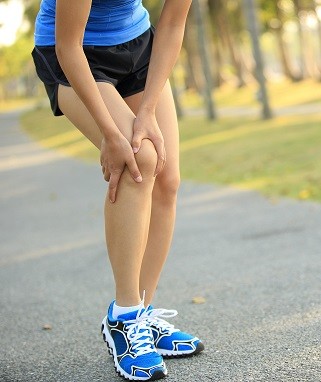
Effects of ACL injuries go beyond pain or loss of range of motion, as affected individuals have a poorer quality of life economically and socially [7] [8].
For instance, a client with this injury is unable to do things they used to do with ease until he/she recovers.
Knee pain prevents affected individuals from performing day-to-day tasks, thus also having a negative impact on their social life.
When your mobility is limited, you cannot do much.
On the other hand, due to the complexity of the process the costs of treatment and rehabilitation can be high for persons on a budget.
Plus, injured athletes who don’t recover due to frequent injuries can lose the source of their income.
How is ACL treated?
In most instances, successful ACL injury rehabilitation features three important factors [9]:
- Constructive communication and rich interaction with significant others
- Strong belief in the importance and efficacy of your actions
- The ability to set reasonable goals
Surgery is a common treatment for this injury. ACL repair consists of re-approximating two ends of the ruptured ligaments using suture.
During the ACL reconstruction, the torn ligament tissue is removed from the knee surgically and replaced with an allo- or autograft tendon either from the medial hamstrings or the middle third of the patellar tendon, but a patient still needs to do ACL rehab exercises after surgery.
To start with your ACL strengthening exercises, schedule an appointment today with an elite personal trainer in London, like myself.
I am training clients covering all Greater London including Wimbledon, Hampstead, Knightsbridge, Notting Hill, West Brompton, Bank, London Bridge, and Victoria.
Despite being considered a standard approach, evidence shows that ligament reconstruction fails to restore the normal joint kinematics and kinetics [10].
In fact, even though ACL reconstruction is an evident indication of the ACL injury, there is no consensus on whether the outcomes of the surgery are superior to those obtained with nonsurgical management.
One study demonstrated that ACL rehab exercises without surgery focusing on the strengthening of hamstring muscles and quadriceps, trunk stabilization, plyometrics exercises, perturbation training, and return-to-sport training led to improvements in the functional capacity of the knee and pain-free life [11].
The reality is that the ACL injuries and partial ACL tear recovery don’t have to affect your quality of life.
Contact me now through this link and – as a top, elite personal trainer in London I will create for you a fully customised ACL rehabilitation exercises list for your knee injury rehab programme.
My training availability is limited due to the fact that I can only work with a limited number of clients.
However, when you work with me I will train you, wherever you are based – from Swiss Cottage, Bond Street, Mayfair, and Kensington all the way to Chelsea, Islington, Bayswater and Fitzrovia.
Are ACL rehabilitation exercises necessary?
Undergoing surgery does not mean your ACL injury recovery is over.
Plus, physical therapy rehab delivered by a highly-skilled injury rehabilitation personal trainer will be highly beneficial, in some cases you will recover without surgical procedures at all (this is depending on the severity of the injury).
Studies show that ACL reconstructions must be combined with detailed postoperative rehabilitation in order for patients to return to their pre-injury activity levels.
Early rehabilitation can include closed chain exercises due to patients’ benefits [12]:
- Decrease of shear and acceleration forces on the joints
- Development of dynamic early joint stability
- Stimulation of proprioceptors (a sensory receptors in your limbs which receive stimuli from within your body, they are associated with position and movement)
Open chain vs. closed chain exercises for ACL recovery?
Which one is more, effective for injury rehabilitation training?
Well, scientists are still debating about this question.
While some evidence shows that closed chain exercises are safer and more functional compared to open chain exercises [13], other studies show that a combination of open and closed chain exercises could coexist in enabling rehabilitation and strengthening objectives [14].
These choices “to be made” depends on the individual and it is a matter of assessment and knee rehab customisation.
Contact me through this link now and I will design for you a customised ACL strengthening exercises programme if you would like to recover safe and faster.
As an elite personal trainer and online nutritionist in London I will train you anywhere in London regardless of your neighbourhood.
It doesn’t really matter if you’re in Central London, Mayfair, Marylebone, and West Brompton, or you’re maybe in West London, East London, Chelsea, or Bank.
I will come to your address and help you recover safe and faster through customised exercise rehab, nutrition and healthy lifestyle.
Ideally, safe ACL rehabilitation exercises programmes for ligament injuries should be compatible with the normal knee arthrokinematics (the movement of joint surfaces) in order to avoid abnormal loading on the joint structure.
This study discovered that the forward lunge, as a weight-bearing closed kinetic chain exercise, offers a safer approach for developing muscle strength and functional stability in injured knees [15].
Injury Prevention Is Also Important
It is not just about following ACL rehabilitation guidelines, active persons (especially younger individuals and women) should also focus on prevention.
Successful recovery after an injury does not mean you will avoid injuries from now on.
Prevention programs turn out to be very effective.
One review analysed 57 studies describing 42 injury prevention training programmes.
Two programs associated with significantly lower injury rates were PEP (Prevent Injury and Enhance Performance) program and Sportsmetrics.
These programmes were linked to increased [16]:
- Lower extremity and abdominal strength
- Vertical jump height
- Estimated maximal aerobic power
- Agility
- Speed
- Knee flexion strength
A separate study analysed available research about prevention training for these injuries in order to discover whether they could minimize the risk of new injury after the successful injury rehabilitation training.
About 24 studies met scientists’ criteria and were used in meta-analysis with a total of 1093 participants.
Findings showed that neuromuscular and proprioceptive training reduce knee injury in general and ACL injury in particular [17] however, if this type of training isn’t customised and implemented correctly it will increase your reinjuring risks.
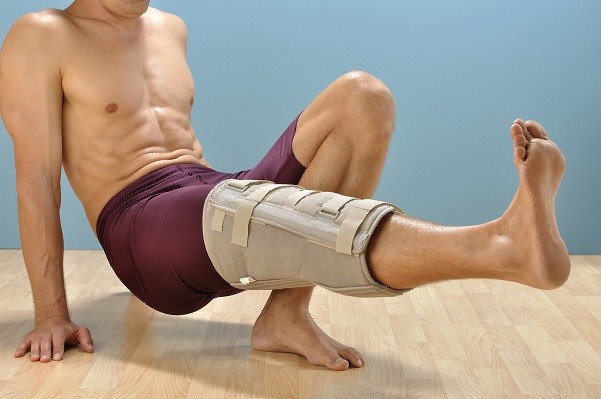
Contact me now through this link if you need an injury expert and the best fitness instructor in London.
I design and provide ACL rehabilitation guidelines programmes regardless of your location, from Fulham, Richmond, West London, and East London to Westminster, Canary Warf, North London, and South London.
Do I have to quit training or playing?
The most common concern that ACL injury patients have is whether they should quit training or playing their sport even if they do the ACL strengthening exercises post-surgery. It is easy to assume you should say goodbye to your previous way of life, but that is not correct.
How?
Your activity preferences mean a lot in overall quality of life.
Seriously!
One study discovered that participants who avoided sport or any activity reported lower quality of life.
On the other hand, participants who overcame or suppressed re-injury fears to continue sport participation reported satisfactory quality of life despite symptoms they experience.
Additionally, people who enjoyed a recreational exercise adapted their lifestyle early after the injury.
Scientists concluded that people who don’t do recreational exercise are at a higher risk of poorer quality of life outcomes [18].
This is what Aaron Cadette said about my ACL knee injury rehabilitation programme:
“My ACL knee injury rehabilitation program was fully customised. Any exercise I couldn’t perform was changed. When I started, I had no flexibility, balance and I felt lots of pain in my knee. Once I started training with Jazz I immediately felt a big improvement. I also saw an increased in strength, flexibility, body coordination, exercise flow and I could do more exercises then as I could when I started. As time went on the pain dramatically reduced. I 100% recommend Jazz Alessi injury rehabilitation services.”
When you are proactive rehabilitating your knee injury with one of the best personal trainer in Londonlike myself I will complete an advanced injury assessment providing you with a customised knee rehab exercise plan fit for your unique rehab needs.
Are you living in Fulham, Westminster, West London, East London, Victoria, Mayfair, Notting Hill or West Brompton?
I will travel directly to any of your London location, thus saving you time and money.
Conclusion
Being physically active is highly important for a healthy and happy life.
Exercising or taking part in some sport decreases your risk of diseases or health conditions.
However, there is always the risk of injuries.
ACL injury is one of the most common injuries and it primarily affects young, active people and it is more prevalent among women than men.
Besides surgery, ACL rehabilitation also revolves around physical therapy.

Amongst many other the ACL rehabilitation exercises programme goal is to safely strengthen your knees in a customised and balanced manner, to reduce and eliminate pain levels, improve range of motion, and prevent future injuries; these are just a few important ACL rehab goals I will help you with.
Working with an elite personal trainer in London is your first step towards achieving a successful sports injury ACL recovery.
Contact me now through this link and I will schedule a meeting designing a customised knee injury rehabilitation plan for you.
References
- Childs, Sharon G, Pathogenesis of anterior cruciate ligament injury. Orthopaedic Nursing, July/August 2002, Volume 21, Issue 4 35-40
- Arnoczky SP, Anatomy of the Anterior Cruciate Ligament. Clinical Orthopedics and Related Research, Jan 1983(172):19-25
- Kiapour AM, Murray MM. Basic science of anterior cruciate ligament injury and repair. Bone & Joint Research. 2014;3(2):20-31. doi:10.1302/2046-3758.32.2000241.
- Gammons M, Ho SSW, Anterior cruciate ligament injury clinical representation, Medscape, June 2016
- Shimokochi Y, Shultz SJ. Mechanisms of Noncontact Anterior Cruciate Ligament Injury. Journal of Athletic Training. 2008;43(4):396-408.
- Boden BP, Dean GS, Feagin JA, Mechanisms of anterior cruciate ligament injury. Orthopedics, June 2000, Volume 23, Issue 6: 573-578 Doi: 10.3928/0147-7447-20000601-15
- Lohmander LS, Ostenberg A, Englund M, High prevalence of knee osteoarthritis, pain, and functional limitations in female soccer players twelve years after anterior cruciate ligament injury. Arthritis and Rheumatism, 2004 Oct;50(10):3145-52 Doi: 10.1002/art.20589
- Mather RC 3rd, Koenig L, Kocher MS, Societal and economic impact of anterior cruciate ligament tears. The Journal of Bone and Joint Surgery, 2013 Oct 2;95(19):1751-9. Doi: 10.2016/JBJS.L.01705
- Johnson U, Ivarsson A, Karlsson J, Rehabilitation after first-time anterior cruciate ligament injury and reconstruction in female football players: a study of resilience factors. BMC Sports Science, Medicine and Rehabilitation, 2016 8:20, Doi: 10.1186/s13102-016-0046-9
- Hoshino J, Fu FH, Irrgang JJ, Tashman S, Can joint contact dynamics be restored by anterior cruciate ligament reconstruction?Clinical Orthopaedics and Related Research, 2013 Sep;471(9):2924-31 Doi: 10.1007/s11999-012-2761-1
- Almedia GPL, Arruda GdE, Marques AP, Physical therapy in the conservative treatment for anterior cruciate ligament rupture followed by contralateral rupture: case report. Fisioterapia e Pesquisa, April/June 2014, vol. 21, no. 2 Doi: 10.1590/1809-2950-/55721022014
- Saka T. Principles of postoperative anterior cruciate ligament rehabilitation. World Journal of Orthopedics. 2014;5(4):450-459. doi:10.5312/wjo.v5.i4.450.
- Fitzgerald GK, Open versus closed kinetic chain exercise: issues in rehabilitation after anterior cruciate ligament reconstructive surgery. Physical Therapy, 1997 Dec;77(12):1747-54
- Seto JL, Brewster CE, Treatment approaches following foot and ankle injury. Clinics in Sports Medicine, 1994 Oct;13(4):695-718
- Norouzi S, Esfandiarpour F, Shakourirad A, Rehabilitation after ACL injury: a fluoroscopic study on the effects of type of exercise on the knee sagittal plane arthrokinematics. BioMed Research International, volume 2013 Doi: 10.1155/2013/248525
- Noyes FR, Barber Westin SD. Anterior Cruciate Ligament Injury Prevention Training in Female Athletes: A Systematic Review of Injury Reduction and Results of Athletic Performance Tests. Sports Health. 2012;4(1):36-46. doi:10.1177/1941738111430203.
- Donnell-Fink LA, Klara K, Collins JE, Effectiveness of knee injury and anterior cruciate ligament tear prevention programs: a meta-analysis, PLoS One, December 4, 2015 Doi: 10.1371/journal.pone.0144063
- Filbay SR, Crossley KM, Ackerman IN, Activity preferences, lifestyle modifications and re-injury fears influence longer-term quality of life in people with knee symptoms following anterior cruciate ligament reconstruction: a qualitative study. The Journal of Physiotherapy, 2016 Apr;62(2):103-10 Doi: 10.1016/j.jphys.2016.02.011
Disclaimer: This website and all its content is to be used for information purposes only. This website or any of its content or links to third parties does not diagnose, advise, treat or cure any ailments, illness or disease.
You agree to hold harmless the owner of this site for any action taken on your own without consulting your medical doctor first by using the information on the website for diagnostic, treatment, or any other related purposes. This is not medical advice. If you are suffering from any illness, disease or ailments please contact your doctor first and immediately.



